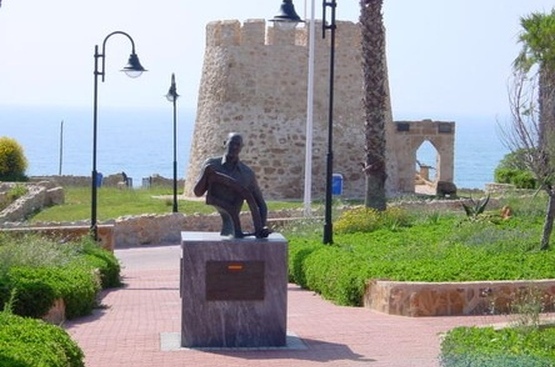Managing resources based on
current needs

City life is closely linked to the water supply. Towns such as ours, with rivers carrying low volumes of water and a temperate climate prone to periods of drought, always require maximum efficiency in natural resource use based on current conditions.
As well as climate and geography, if one adds the growth in population and services in the last century, then it is easy to understand the challenges we face in ensuring we have water of the right quality and quantity in our homes today. It takes many years of planning, innovation and technology and the involvement and responsibility of many people to ensure we never lack water.
Among our new challenges, we are striving to consolidate a more sustainable urban water cycle to guarantee the supply with minimal environmental impact and thus offer water of the highest quality.
-
A 100-year-old service

Life has changed a great deal and much has changed in Torrevieja in recent years. We no longer remember how, from the 17th century until well into the last century, water was still supplied from wells, pulling on an esparto rope, helped by a pulley, to lift a bucket from the depths of the earth. During periods of draught, water carriers were needed, bringing carts loaded with jars and pots to our homes from wells near La Mata and La Ceñuela.
The first canals date from 1891, and a year later water reached at least three public fountains. Water as a universal heritage belonging to everyone, for everyone. This motto has been applied in Torrevieja since the municipal drinking water service was established on 23 December 1892.
In 1946, Torrevieja Town Council became a full member of the Canales del Taibilla Municipal Association (MCT) which would later provide all the sources for the water supply to the city.
In 1965, problems of supply to the population became more acute, as the increase in tourism began to be noted in Torrevieja. In an attempt to solve the crisis, the Administrative Committee for the Torrevieja Water Supply was set up to oversee work on catchment and extending networks and tanks to ensure the supply for over 1,000 customers at that time. In addition, the first supply tariffs were approved, giving rise to this municipal service.
Five years later, in 1970, work began on building the sewer system. Homes that had traditionally used cesspits were connected to the public network.
In 1973, a major step forward was taken when Hidraqua was awarded the concession for the water distribution service, thereby ensuring effective, professional management of the service to customers. Since then, the synergy of public and private efforts has provided Torrevieja with an exemplary water service, looking to the future to serve its customers and users.
The first wastewater treatment plant started operations in 1982. The Town Council organised soft credit with a number of banks to help families who could not afford the connection fee. In just two years, over 90% of homes were connected to the sewer system.
From its original 6,000 m3/day, the treatment plant has increased its capacity ten-fold thanks to extensions in 1990, 1993 and more recently in 2007.
In 1997, a tertiary treatment plant for treated water started operations to provide better quality water for the irrigation of the town’s parks and gardens.
Since the plant started operating in July 1982, all treated water has been reused, making Torrevieja a pioneer in the use of this resource.
-
Torrevieja, a major town

In July 2006, the plenary session of the Parliament of the Regional Government of Valencia, the Cortes Valencianas, granted Torrevieja the title of 'Large Town of the Community of Valencia'. The seafaring and salt-producing Torrevieja of the 20th century has given way to a new town, where people come not only to spend the summer but also to live all year round.
Many people, attracted by the charms of the town and particularly its climate, have decided to move here and join a varied community where families from Torrevieja live together with more recent arrivals from all parts of Spain, the European Union and the rest of the world.
Water is life. Once water had been brought from the Sierra del Taibilla mountains in the 1970s, the quantity and quality of the water supply was assured, providing a major boost to the tourism industry.
Whereas the rise in tourism was the driving force for the development of the town in previous decades, more recently it has been the Spanish population that seems to have grown the most. Today, there are 84,000 registered inhabitants, but in fact there are regularly over 209,000 people living here, rising to 374,000 inhabitants in the peak season.
This continual growth, which has produced large rapid urban expansion, requires thorough, systematic planning, revision and adaptation to match the size and use of water infrastructures to the needs of the population at any given time.